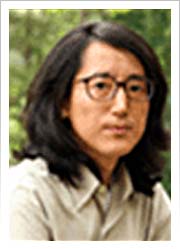News Flash – UCR Hires Dr. Noboru Sato
We are very pleased to announce that Dr. Noboru Sato joined the UCR campus this September. Dr. Sato has an MD from Oita Medical University and a PhD degree from Juntendo University School of Medicine. He has worked with human and mouse embryonic stem cells for 10 years at Cornell University, Sloan-Kettering Cancer Center and Rockefeller University. After obtaining his Ph.D., Dr. Sato pursued his research interests by coming to the U.S. where he joined one of the most advanced laboratories in stem cell tissue regeneration, the lab of Dr. Ronald Crystal at Cornell. There he studied one of the earliest gene products that were found to induce stem cell differentiation, “sonic hedgehog” (Shh). Dr. Sato became interested in defining experimentally how stem cells could be kept for many years in a state of non-differentiation, but also in constant readiness to perform tissue regeneration when stimulated to do so. His approach, during fellowships at the Memorial Sloan-Kettering Cancer Center and at Rockefeller University, was to study the status of gene expression in embryonic stem cells (ES cells) versus the differentiated progeny of these cells. Dr. Sato found that there was a reproducible set of molecules whose expression was “turned on” in ES cells and whose distinctive alteration was key to differentiation in several different pathways. The key group of signaling molecules in this “ES pluripotency signature” was the Wnt signaling pathway, a central pathway (which includes Fzz, a close relative of the Shh signal that he worked on before). Wnt signaling has critical importance in defining the functional status of numerous different types of cells from different lineages, all the way from bone cells to immune cells to nerve cells. Dr. Sato is continuing his studies on stem cell pluripotency in the Department of Biochemistry at UCR this year. Dr. Sato was also a participant in the CIRM-UK meeting last November in England.
Examples of Dr. Sato’s publications:
- Sato N., Leopold PL., and Crystal RG. Induction of the hair growth phase in postnatal mice by localized transient expression of Sonic hedgehog. J. Clin. Invest. 104: 855-864, 1999.
- Sato N., Leopold PL., and Crystal RG. Localized, transient, enhanced expression of sonic hedgehog accelerates hair regrowth following chemotherapy-induced alopecia. J. Natl. Cancer Inst. 93, 1858-1864, 2001.
- Bergstein I, Leopold P, Sato N, Panteleyev A, Christiano A, and Crystal R. In vivo enhanced expression of patched dampens the sonic hedgehog pathway. Mol Ther. 2, 258-264, 2002
- Sato N, Sanjuan IM, Heke M, Uchida M, Naef F, and Brivanlou AH. Molecular signature of human embryonic stem cells and its comparison with the mouse. Dev Biol. 260, 404-413, 2003
- Sato N, Meijer L, Skaltsounis L, Greengard P, and Brivanlou AH. Maintenance of pluripotency in human and mouse embryonic stem cells through activation of Wnt signaling by a pharmacological GSK-3-specific inhibitor. Nat. Med. 10, 55-63, 2004
- Sato N and Brivanlou AH. Microarray Approach to Identify the Signaling Network Responsible for Self-renewal of Human Embryonic Stem Cells. Methods in Molecular Biology, 331:267-83, 2006.
- Sato N and Brivanlou AH. Manipulation of Self-renewal in Human Embryonic Stem Cells through a Novel Pharmacological GSK-3 Inhibitor. Methods in Molecular Biology, 331:115-28, 2006.
- Scott NA, Sato N, and Brivanlou AH. Feeder Free Culture of Human Embryonic Stem Cells. Stem Cells: From Bench to Bedside, World Scientific Publishing. (in press)
Contact information:
noboru.sato@ucr.edu
Department of Biochemistry
(951) 827-4227 (voice)
